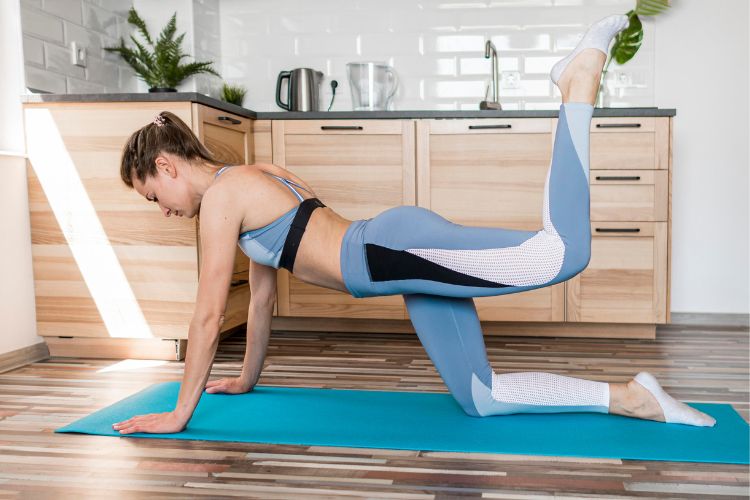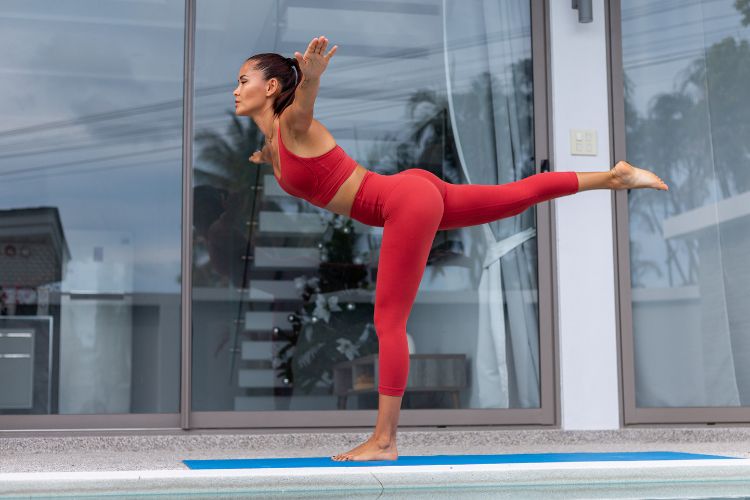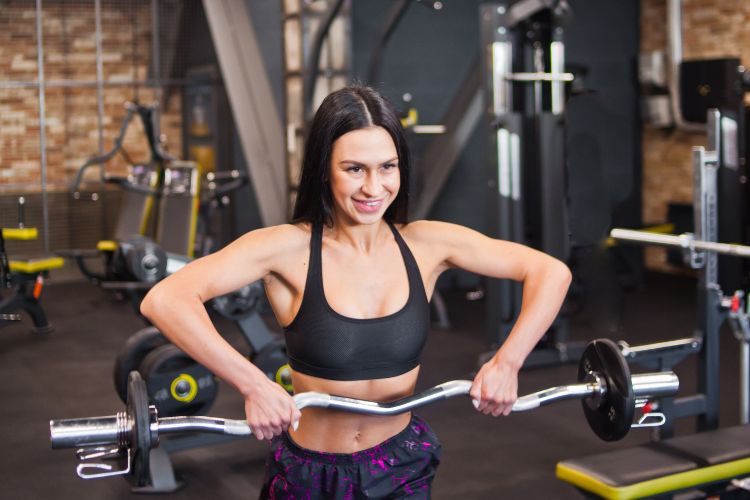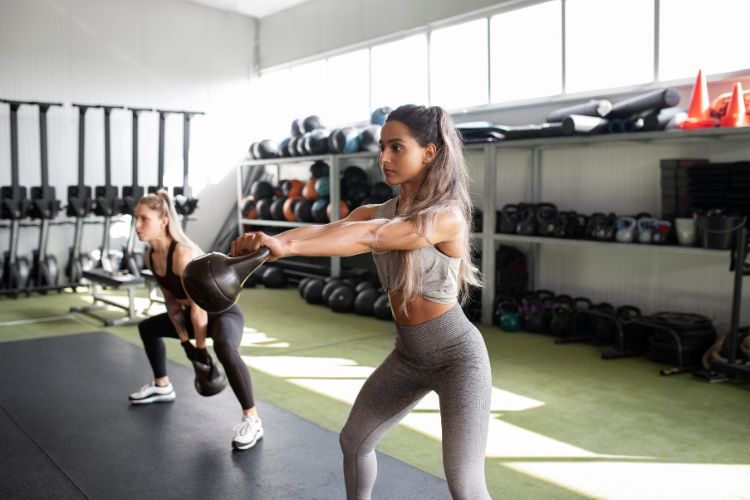Sign up for workout ideas, training advice, reviews of the latest gear and more.





In recent years, High-Intensity Interval Training (HIIT) has gained immense popularity among fitness enthusiasts, and for good reason. This form of exercise is not only time-efficient but also highly effective in burning calories, improving cardiovascular health, and building strength. For women, in particular, HIIT offers a versatile and adaptable workout routine that can be tailored to individual fitness levels and goals. In this blog post, we will delve into the benefits of HIIT for women, provide a variety of workout routines, and offer tips on how to get the most out of your HIIT sessions.
High-Intensity Interval Training, or HIIT, is a form of cardiovascular exercise that alternates between short bursts of intense activity and periods of lower-intensity recovery or rest. The idea is to push your body to its maximum capacity during the high-intensity intervals, followed by a brief recovery period to allow your heart rate to come down slightly before ramping it up again.
The effectiveness of HIIT lies in its ability to elevate your heart rate quickly and keep it elevated throughout the workout. This not only burns a significant number of calories during the exercise itself but also increases your metabolic rate for hours afterward—a phenomenon known as the “afterburn effect” or excess post-exercise oxygen consumption (EPOC). This means you continue to burn calories even after you’ve finished your workout.
One of the most appealing aspects of HIIT is its efficiency. A typical HIIT session can last anywhere from 15 to 30 minutes, yet it can burn as many calories as a longer, steady-state cardio workout. This makes it an excellent option for women with busy schedules who still want to maintain an active lifestyle.
HIIT is known to improve cardiovascular health by increasing your heart’s efficiency and lowering blood pressure. The intense bursts of activity followed by recovery periods help to strengthen the heart muscle, improve circulation, and enhance overall cardiovascular endurance.
HIIT is particularly effective for fat loss, especially in stubborn areas like the abdomen, thighs, and arms. The combination of high-intensity exercise and short recovery periods helps to break down fat stores while preserving lean muscle mass. Additionally, many HIIT exercises incorporate strength-training elements, which help to tone and define muscles.
For women, HIIT can have a positive impact on hormonal balance. Intense exercise has been shown to increase the production of endorphins, which can help alleviate symptoms of PMS and menopause. Additionally, HIIT can improve insulin sensitivity, which is beneficial for women with polycystic ovary syndrome (PCOS) or those at risk of developing type 2 diabetes.
Exercise, in general, is known to improve mental health, but HIIT, in particular, can be a powerful tool for reducing stress, anxiety, and depression. The intense nature of the workout forces you to focus on the present moment, providing a mental break from daily worries. The endorphin rush that follows a HIIT session can also boost your mood and energy levels.
Before diving into a HIIT routine, it’s important to assess your current fitness level. If you’re new to exercise or have any underlying health conditions, it’s a good idea to consult with a healthcare provider before starting HIIT. Once you have the green light, start with shorter intervals and lower intensity, gradually increasing as your fitness improves.
HIIT can be done with a variety of exercises, including running, cycling, jumping rope, bodyweight exercises, and even weightlifting. The key is to choose exercises that you enjoy and that challenge your body. For beginners, bodyweight exercises like squats, lunges, push-ups, and burpees are a great place to start.
Never skip the warm-up and cool-down phases of your workout. A proper warm-up prepares your body for the intense activity ahead, reducing the risk of injury. A cool-down helps to gradually lower your heart rate and prevent muscle soreness. Spend at least 5-10 minutes on each phase.
HIIT is intense, and it’s important to listen to your body. If you feel dizzy, lightheaded, or experience any pain, stop immediately and rest. It’s better to take a break and recover than to push through and risk injury.
If you’re new to HIIT, start with this beginner-friendly routine. Perform each exercise for 30 seconds, followed by 30 seconds of rest. Complete 3 rounds.
For those with some experience, try this intermediate routine. Perform each exercise for 40 seconds, followed by 20 seconds of rest. Complete 4 rounds.
For the more experienced, this advanced routine will challenge your endurance and strength. Perform each exercise for 50 seconds, followed by 10 seconds of rest. Complete 5 rounds.
Consistency is key when it comes to seeing results from HIIT. Aim to incorporate HIIT workouts into your routine 2-4 times per week, depending on your fitness level and goals. Remember, it’s better to do shorter, consistent workouts than sporadic, longer sessions.
To prevent plateaus and keep your workouts interesting, vary your exercises and intervals. Try different combinations of cardio and strength exercises, and adjust the length of your intervals to keep your body guessing.
Proper form is crucial in HIIT to prevent injury and maximize effectiveness. Take the time to learn the correct form for each exercise, and don’t hesitate to modify movements if needed. If you’re unsure, consider working with a personal trainer to ensure you’re performing exercises correctly.
HIIT is demanding, so it’s important to fuel your body properly. Eat a balanced diet rich in whole foods, including lean proteins, complex carbohydrates, and healthy fats. Stay hydrated, especially before and after your workouts, and consider a post-workout snack or meal to aid in recovery.
Keep track of your workouts to monitor your progress over time. Note the exercises you perform, the length of your intervals, and how you feel during and after each session. This will help you identify areas for improvement and celebrate your achievements.
As mentioned earlier, warming up is essential to prepare your body for the intense activity ahead. Skipping the warm-up can increase your risk of injury and reduce the effectiveness of your workout.
While HIIT is highly effective, it’s also demanding on your body. Overtraining can lead to burnout, injury, and decreased performance. Make sure to incorporate rest days and listen to your body’s signals.
Recovery is just as important as the workout itself. Ensure you’re getting enough sleep, staying hydrated, and eating a balanced diet to support your body’s recovery process.
Pain is your body’s way of signaling that something is wrong. If you experience pain during a HIIT workout, stop immediately and assess the situation. Pushing through pain can lead to serious injuries.
High-Intensity Interval Training (HIIT) is a powerful and efficient workout option for women looking to improve their fitness, burn calories, and build strength. With its numerous benefits, including improved cardiovascular health, fat loss, and mental well-being, HIIT is a versatile addition to any fitness routine. By starting at the appropriate level, choosing the right exercises, and following the tips outlined in this post, you can maximize the effectiveness of your HIIT workouts and achieve your fitness goals. Remember to stay consistent, listen to your body, and enjoy the process—your health and well-being are worth it!
Stay up to date on the latest women’s health, fitness and lifestyle trends and tips.